B-hFPR1 mice
| Strain Name | C57BL/6N-Fpr1tm1(FPR1)Bcgen /Bcgen | Common Name | B-hFPR1 mice |
| Background | C57BL/6N | Catalog number | 113054 |
|
Aliases |
FMLP, FPR | ||
- FPR1, a G protein-coupled receptor, has a high affinity for N-formyl-methionyl peptides (powerful neutrophil chemotactic factors).
- The exon 2 of mouse Fpr1 gene that encodes extracellular domain, transmembrane domain, cytoplasmic region and 3’UTR are replaced by human counterparts in B-hFPR1 mice. The promoter and 5’UTR region of the mouse gene are retained. The human FPR1 expression is driven by endogenous mouse Fpr1 promoter, while mouse Fpr1 gene transcription and translation will be disrupted.
- FPR1 protein was detected in spleen, blood, and bone marrow of homozygous B-hFPR1 mice.
- Application: This product is used for pharmacodynamics and safety evaluation of anti-inflammatory drugs.
mRNA expression analysis in humanized B-hFPR1 mice
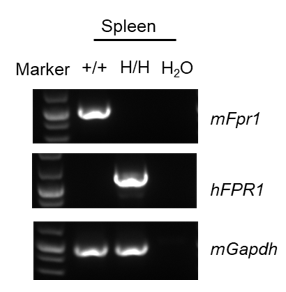
Species specific analysis of FPR1 gene expression in wild-type C57BL/6JNifdc mice and homozygous humanized B-hFPR1 mice by RT-PCR. Splenocytes were collected from wild-type C57BL/6JNifdc mice (+/+) and homozygous B-hFPR1 mice (H/H). Mouse FPR1 mRNA was detectable only in wild-type C57BL/6JNifdc mice. Human FPR1 mRNA was detectable only in homozygous B-hFPR1 mice, but not in wild-type C57BL/6JNifdc mice.
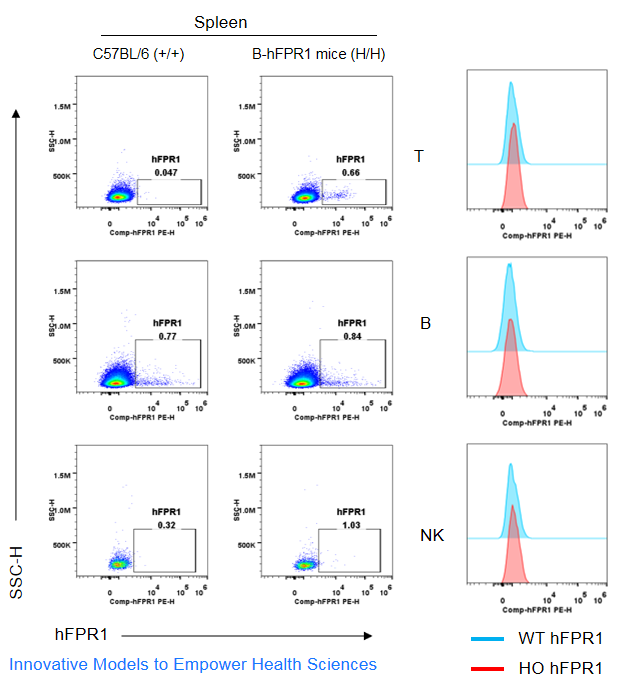
Strain specific FPR1 expression analysis in homozygous B-hFPR1 mice by flow cytometry. Splenocytes were collected from wild-type C57BL/6 mice (+/+) and homozygous B-hFPR1 mice (H/H), and protein expression was analyzed with anti-human FPR1 antibody (Biolegend, 391606) by flow cytometry. hFPR1 was not detectable in T cells, B cells, and NK cells of homozygous B-hFPR1 mice.
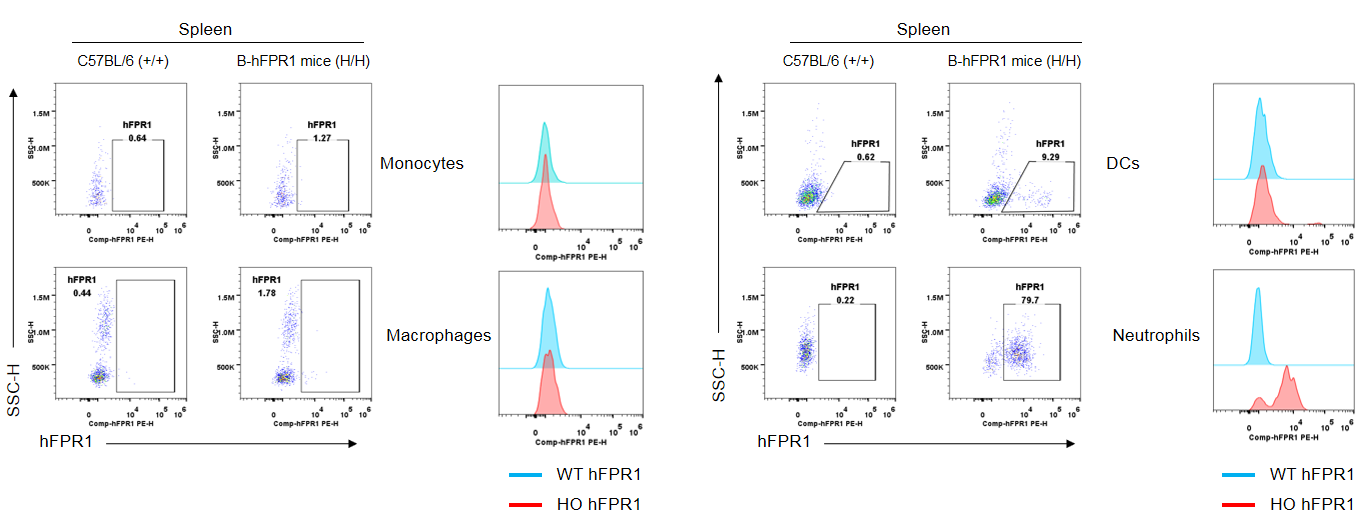
Strain specific FPR1 expression analysis in homozygous B-hFPR1 mice by flow cytometry. Splenocytes were collected from wild-type C57BL/6 mice (+/+) and homozygous B-hFPR1 mice (H/H), and protein expression was analyzed with anti-human FPR1 antibody (Biolegend, 391606) by flow cytometry. hFPR1 was not detectable in monocytes and macrophages of homozygous B-hFPR1 mice. hFPR1 was detectable in DCs and neutrophils of homozygous B-hFPR1 mice.
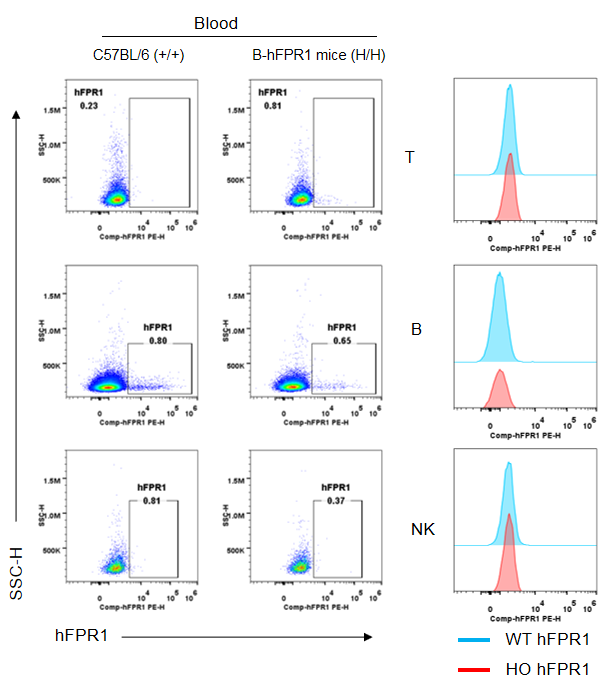
Strain specific FPR1 expression analysis in homozygous B-hFPR1 mice by flow cytometry. Blood cells were collected from wild-type C57BL/6 mice (+/+) and homozygous B-hFPR1 mice (H/H), and protein expression was analyzed with anti-human FPR1 antibody (Biolegend, 391606) by flow cytometry. hFPR1 was not detectable in T cells, B cells, and NK cells of homozygous B-hFPR1 mice.
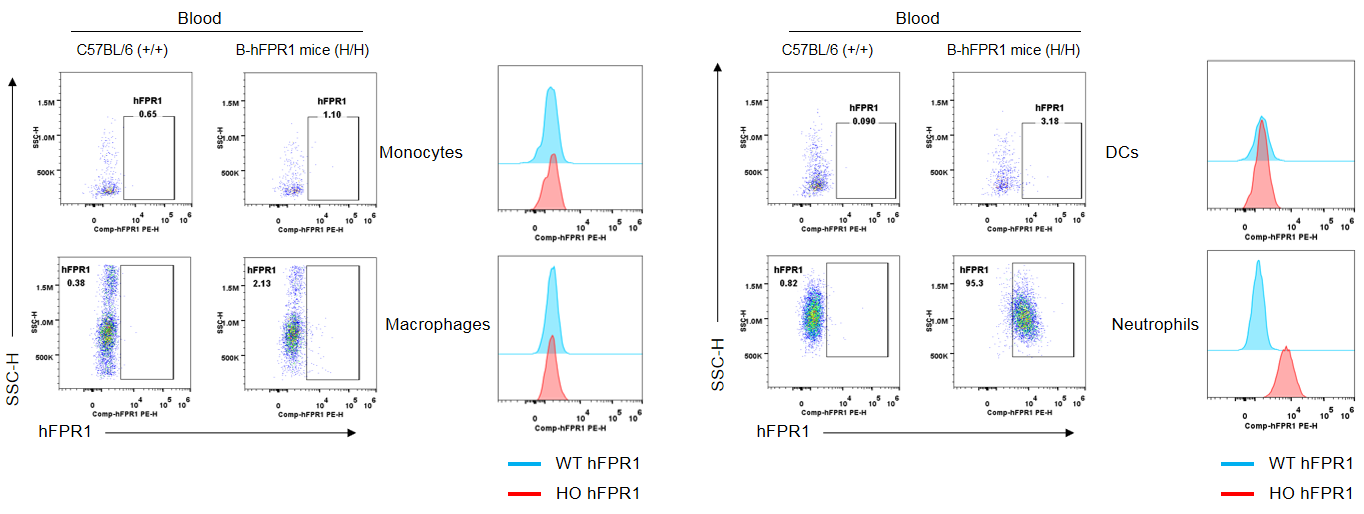
Strain specific FPR1 expression analysis in homozygous B-hFPR1 mice by flow cytometry. Blood cells were collected from wild-type C57BL/6 mice (+/+) and homozygous B-hFPR1 mice (H/H), and protein expression was analyzed with anti-human FPR1 antibody (Biolegend, 391606) by flow cytometry. hFPR1 was not detectable in monocytes, macrophages and DCs of homozygous B-hFPR1 mice. hFPR1 was detectable in neutrophils of homozygous B-hFPR1 mice.
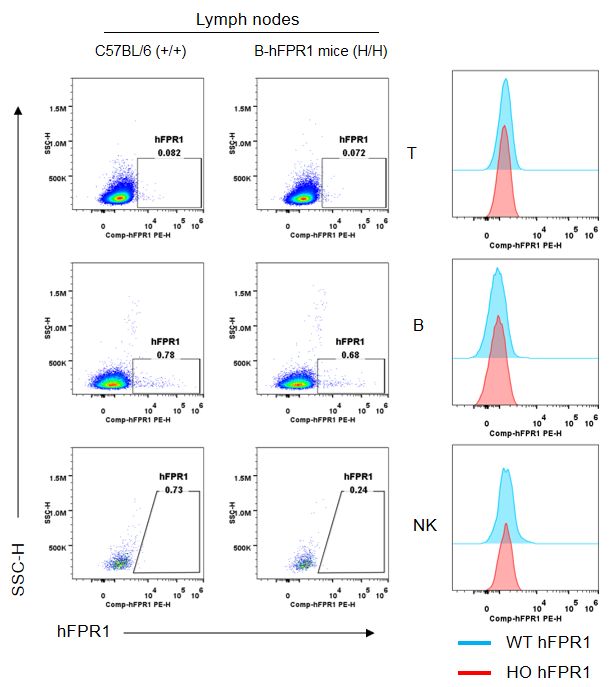
Strain specific FPR1 expression analysis in homozygous B-hFPR1 mice by flow cytometry. Lymph nodes were collected from wild-type C57BL/6 mice (+/+) and homozygous B-hFPR1 mice (H/H), and protein expression was analyzed with anti-human FPR1 antibody (Biolegend, 391606) by flow cytometry. hFPR1 was not detectable in T cells, B cells, and NK cells of homozygous B-hFPR1 mice.
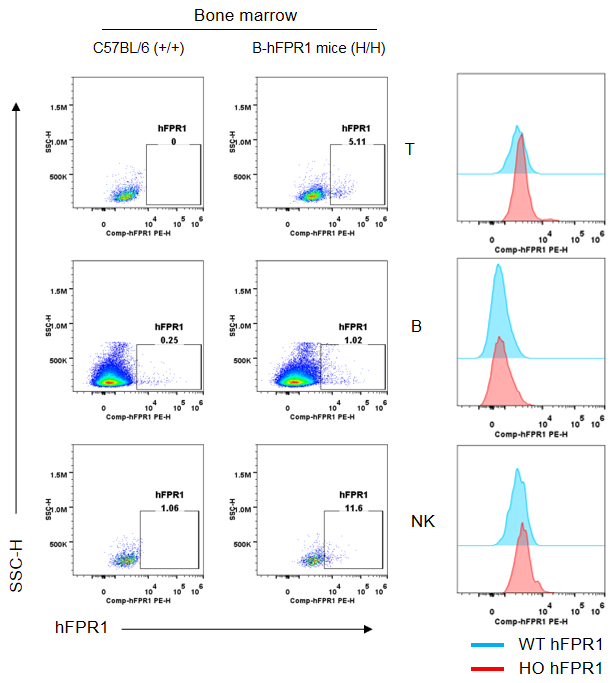
Strain specific FPR1 expression analysis in homozygous B-hFPR1 mice by flow cytometry. Bone marrow was collected from wild-type C57BL/6 mice (+/+) and homozygous B-hFPR1 mice (H/H), and protein expression was analyzed with anti-human FPR1 antibody (Biolegend, 391606) by flow cytometry. hFPR1 was detectable in T cells and NK cells of homozygous B-hFPR1 mice.
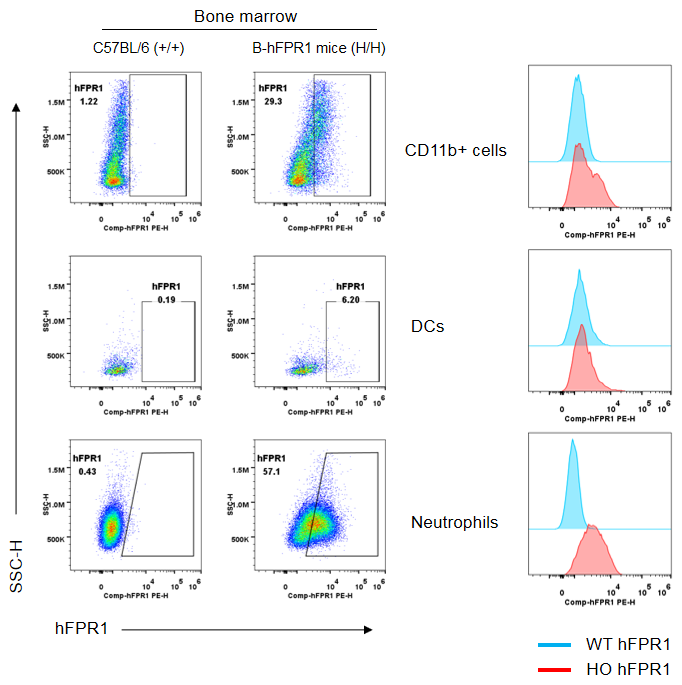
Strain specific FPR1 expression analysis in homozygous B-hFPR1 mice by flow cytometry. Bone marrow was collected from wild-type C57BL/6 mice (+/+) and homozygous B-hFPR1 mice (H/H), and protein expression was analyzed with anti-human FPR1 antibody (Biolegend, 391606) by flow cytometry. hFPR1 was detectable in CD11b+ cells (monocytes and macrophages), DCs and neutrophils of homozygous B-hFPR1 mice.









